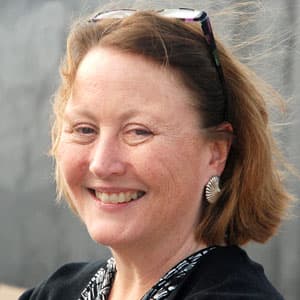Advertisement
To Bring Shakespeare To Life, Teachers Learn To Act More Like Actors
Resume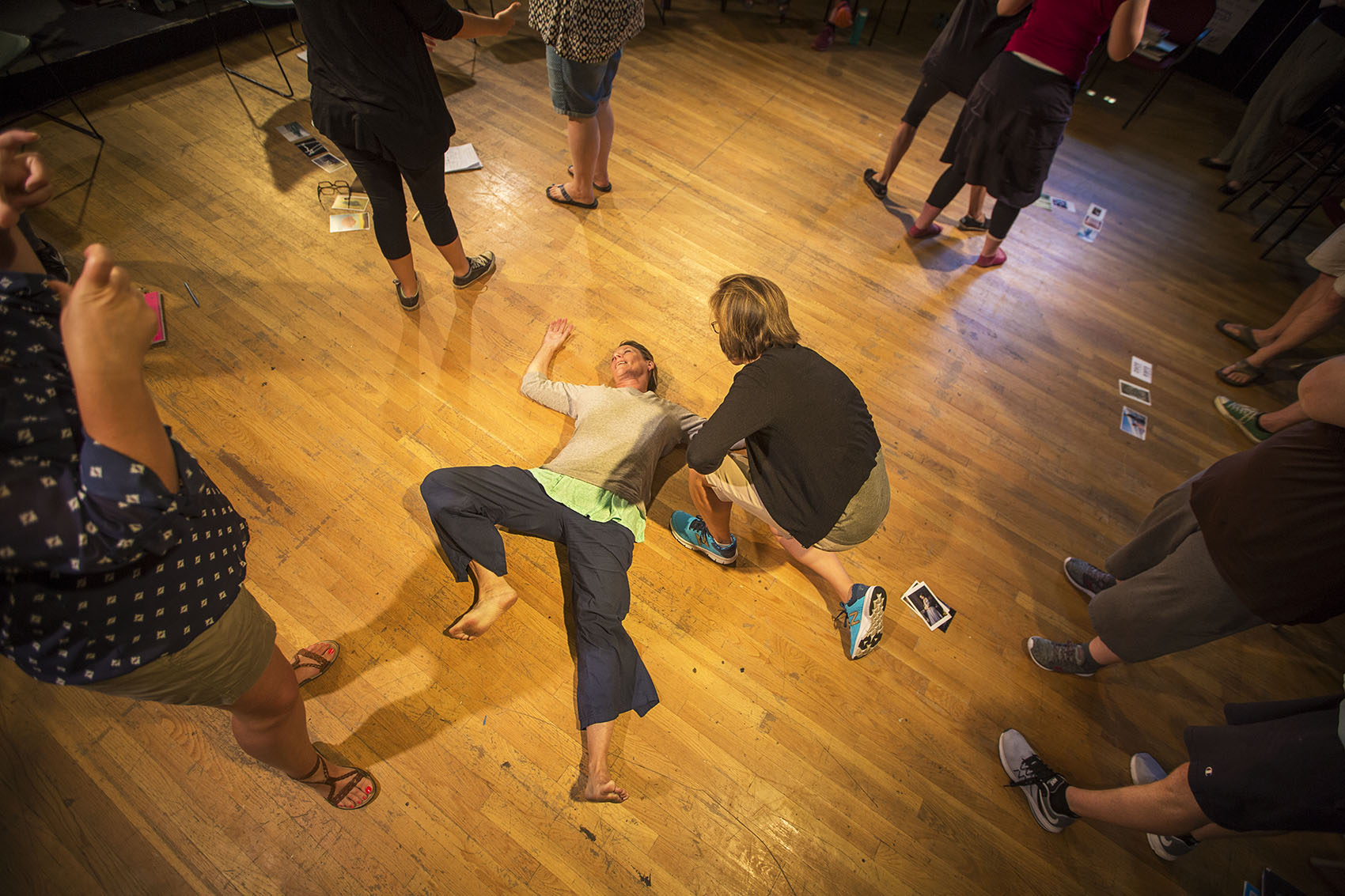
The actors in the Actors' Shakespeare Project (ASP) know what students think of Shakespeare. They hear it all the time when they visit schools.
"We ask them at the beginning," says Mara Sidmore, who runs the Boston-based troupe’s education programs. “We say, ‘When I say Shakespeare, you say …?' And we turn it into a kind of a call-and-response thing, and we hear things like ‘Dead!’ ‘White guy!' You know. ‘Who cares!’ ”
Sidmore says kids have trouble with Shakespeare when they only read his plays.
"There is some understanding that just comes by doing, rather than analyzing or talking about," she says. "And doing is what theater artists do."
So ASP encourages teachers to have kids act — not just read.
"Once they have the text in their mouth from the perspective of a character, everything is going to make sense to them," Sidmore explains. "The faster we get them into the scenes, the more they suddenly say, ‘Oh, OK, that's why so-and-so's fighting with so-and-so.’ "
Sidmore and other members of the troupe work with teachers in an annual week-long workshop. There, about 20 teachers at a time learn acting, vocal and dance techniques. They also explore ways to connect these artistic approaches to the curriculum standards they’re expected to meet.
“We do real in-depth vocal and physical work — the kind of training work you would do if you were going to acting school. We just scale it back,” Sidmore says with a laugh, “because we have a week.
“And also because it’s difficult,” she adds. “It’s difficult, particularly if you’re someone who is intellectual, to be able to reconnect those parts of oneself that might not have been connected.”
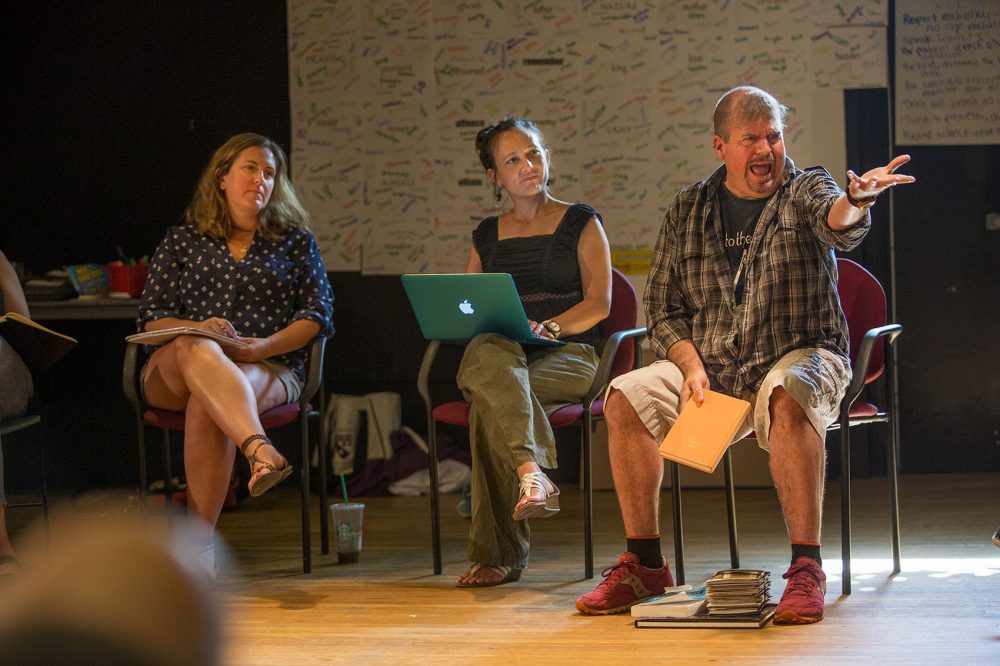
In one recent workshop, director David Gammons spends a morning showing teachers how he uses visual imagery to deepen his interpretations of Shakespeare’s work. With the teachers seated on chairs in a circle, Gammons begins by asking them each to offer a single image that comes to mind when they think of “Hamlet.”
“Be specific. Be precise. But be personal,” Gammons says. "I hope as we share some of this, you will have moments in hearing what other people say where you go, 'Yes! Uh, yes,' and you will have others where you go 'That's part of your "Hamlet"? I never would have had that in my world at all.' So, when you picture this play, beyond that guy with the skull, what do you see? What’s in this world?”
“I thought of stone walls and long windows with deciduous trees that had no leaves,” one teacher offers.
“Vivid, specific, nice, yes,” Gammons replies. “Next?”
“Uh, one thing that popped for me that felt fresh,” says the next teacher, “was a whoopie cushion.”
The group erupts in laughter.
"OK, we're putting it out there," Gammons says.
They go on: a marble statue, dark tapestries, an unweeded garden. And then another surprise: “an old, beat-up VW.”
“Right?” Gammons says. “So right there you have a perfect evocation, allowing the play’s poetry to trigger an image that Shakespeare himself could never have imagined, because they didn’t have VW Bugs 400 years ago. And yet every single one of us, I think, can so clearly picture the Hamlet who pulls up in his broken-down Bug, and his mom is like, ‘Please, I will buy you any car you want, Hamlet,’ and there’s weed in the glove compartment, and he doesn’t live there anymore — right there is a whole production, right?”
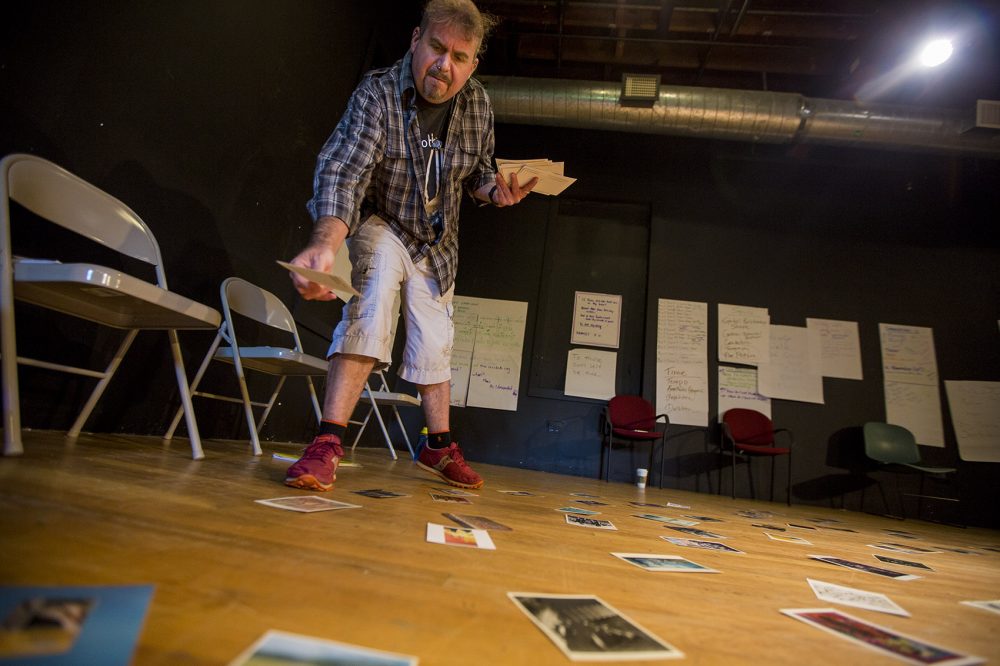
Once everyone has contributed an image, Gammons starts strewing postcards across the floor: clouds, a snake, a gemstone, portraits, abstractions, a whole range of things to look at. From these, he tells the group, each person should select just three that somehow evoke “Hamlet.”
Next, he tells them to arrange the three images so that they tell a Hamlet-related story in some way. Then he pairs them off to tell these stories to each other.
And then comes the really surprising leap: Gammons instructs the pairs to devise a sequence of movements, based on their images, that tell that story. What emerges, after a few minutes of intense and playful work, is remarkable: strange, wordless actions that do, to a greater or lesser degree, call up moments from the play.
“Visual imagery is not just for the designer to come up with ideas for what the set or the costumes might look like. It’s a way of entering the world of the play,” Gammons says. “If I say, 'Look at that image — now do your scene,' it’s going to be a little bit different.”
On another day, director Doug Lockwood joins the group to talk about his “Hamlet,” which is ASP’s first production this fall. Omar Robinson, who’s playing Hamlet, and Poornima Kirby, who plays Ophelia and is also participating in the workshop, act out a scene and discuss it with the director.
Lockwood also shares some of the exercises he does with the actors, like “walking the punctuation”: You speak the lines of the play while walking, and at every comma, you make a 90-degree turn. For periods and exclamation points, you stomp.
“Even holding the script,” Lockwood says, “it gets kind of a little bit of those body energies flowing.”
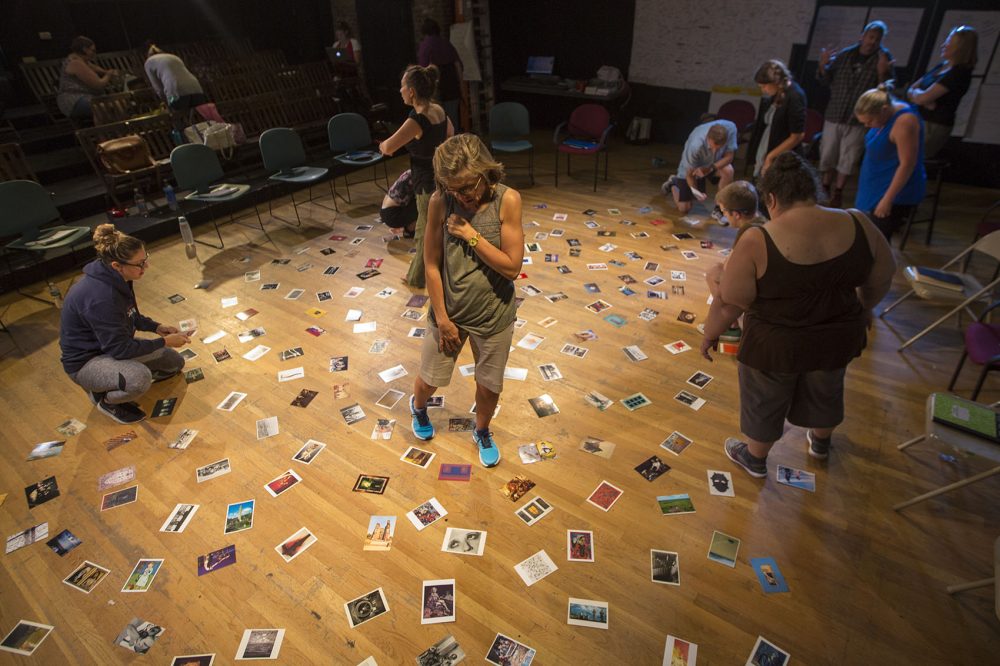
Teacher Jeff Billard uses many of the Actors' Shakespeare Project techniques with his students at Barnstable High School in Hyannis. On a recent day, he has a class of seniors who are reading “Hamlet” do Lockwood’s punctuation walk.
“It helps it make more sense once you’ve, like, actually done it,” says one student, Maeve Moriarty, “because you have that sort of physical memory of it.”
Billard says that moving around, instead of sitting and reading, also gets the students to connect more deeply with the work.
“Getting up and moving in a classroom like we’re doing, it engages you,” he says. “It engages your physicality, engages your mind.”
And, Billard says, it makes Shakespeare fun.
“And once it becomes fun, it becomes accessible. And then once it becomes accessible, you demystify the whole thing. And then it’s like, I got this,” he says.
Billard takes fun pretty seriously. It’s essential, he says, in an era of high-stakes testing that stresses out both students and teachers.
“We’re having more fun in the class, but it’s productive fun,” he says. “And the kids are having fun, and I’m having fun. And that’s so important. Because you see so many people just walk around school like this” -- he makes a long, grim face -- “you know? No, change it, flip it, have fun!”
Billard has taken two teachers' workshops with ASP. He also teaches courses at Fitchburg State University on how to integrate the arts into education. And he brings dance and other art forms into many of his own classes, not just Shakespeare.
Billard says the arts make it easier to teach — and to learn.
“It's a different way up the mountain,” he says. “You're still doing all the standards, you're still doing everything you're supposed to do, but it's just a different way. And it takes a little longer for a teacher to do it in the beginning, but what I've found is that there's less remediation on the other end.”
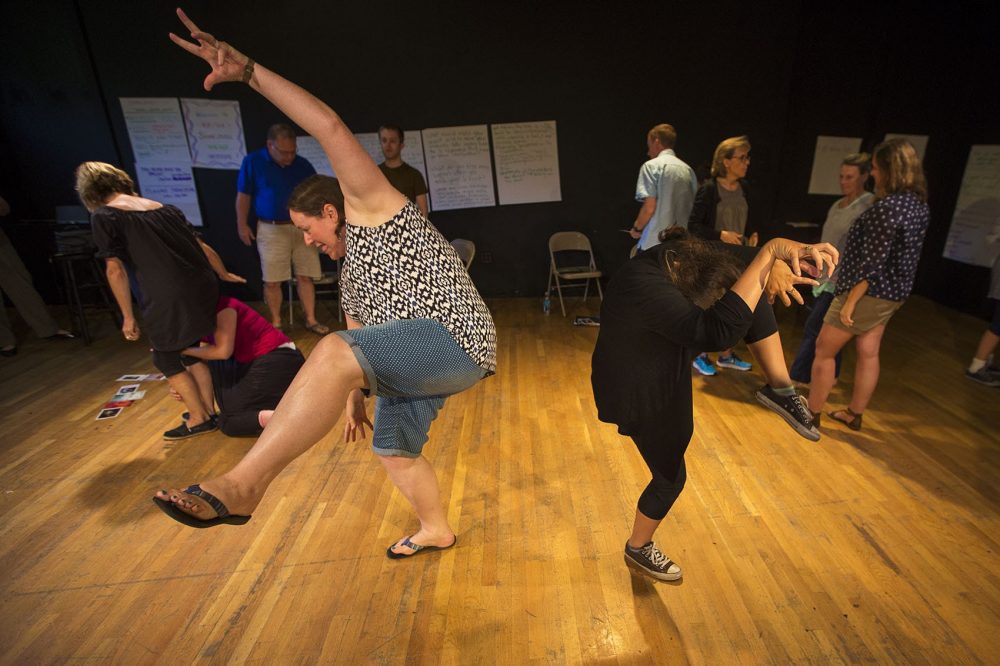
For instance, he had one student create a dance about Thoreau's “Walden.” She was failing English, he says, and he knew she wouldn't write a paper. So he said she could dance — then explain how the dance explored the book's ideas.
“You know the standards you have to get to, but it’s how you’re going to get there,” Billard says. “So if you’re using dance or movement, that’s just the method of getting to where you need to go.”
And where a Shakespeare class needs to go is ultimately pretty simple: It’s about getting students to understand what Shakespeare was really writing about.
“I mean, murder. Power. Revenge,” ASP's Sidmore says. “Family dynamics. My parents are making me do something I don’t wanna do. Or I have no parent. I mean, these are real things that these students are struggling with every single day.”
Once students have worked through the text like actors, and even acted some of it out, Sidmore says, they end up with new answers to the actors' original question.
“We might hear things like ‘When I say Shakespeare, you say …’ ‘Love.’ ‘When I say Shakespeare, you say …’ ‘Passion.’ ‘When I say Shakespeare, you say … ‘My life.’ ”
“It’s all about feeling it,” Billard says. “And making it a part of your body — not just your mind.”
This article was originally published on October 21, 2016.
This segment aired on October 21, 2016.
